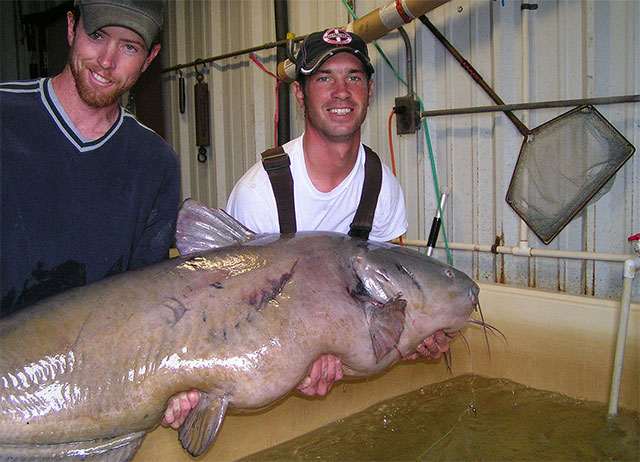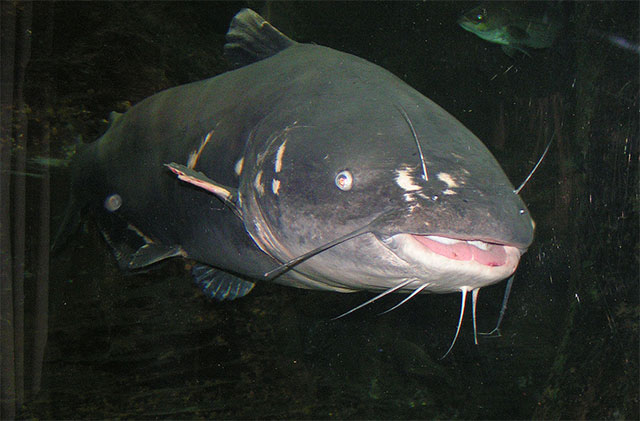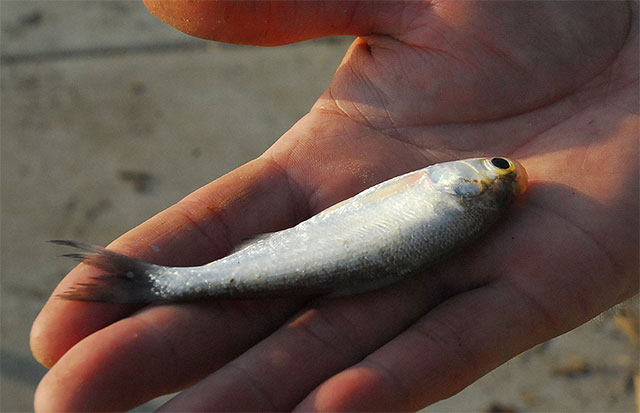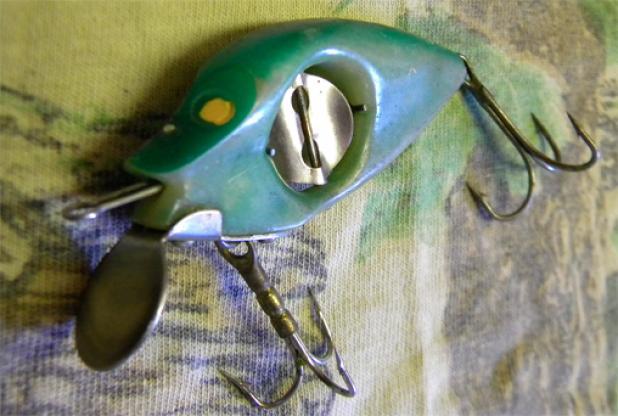
Given my choice, I'll most often be found with either a saltwater fly rod in my hand or a freshwater baitcasting rig with a bass tempting topwater tied on at the end of my line.
But not always.
Especially in light of the fact that I live a few miles from voluminous Lake Texoma, an 89,000-acre reservoir that straddles the Texas/Oklahoma border an hour's drive north of Dallas.
Because of that fact, don't be surprised to see yours truly with some different gear in hand over the next few months as cooler weather sends water temperatures in a downward spiral.
Because when it comes to catching blue catfish – especially those on the world-class end of the spectrum – there aren't many better spots to wet a line for such whiskerfish, especially during the colder autumn and winter months.
While big blue cats can be pulled from the Red River fed Texoma at other times of the year, the period between October and the end of March is most often the sport’s prime time.
But don't take my word on the matter.
Instead take the word of Cody Mullennix, the local Howe, Texas, angler who landed Splash, the former world record blue cat caught at Texoma back in 2004, a giant whiskerfish that tipped the scales at 121 pounds, 8 ounces.
Mullennix hooked, battled, and landed the 60-inch blue catfish – which was eventually certified as a Texas state record, a then International Game Fish Association (IGFA) 20-pound-test line-class world record and an overall IGFA world record – after a 20-minute tussle on the Texas side of the two-state reservoir.
"I grabbed it (the rod) and knew I had another good fight, that I had hooked another good fish," said Mullenix during an interview I did with him at the time.
That was obviously an understatement, and then some.
After a strong battle with the huge blue cat, Mullennix summoned his longtime angling buddy Jason Holbrook to his side for some help in landing the fish.
Holbrook was a good candidate for the chore since he himself had landed a then state-record rod-and-reel blue catfish from Texoma back in 1993, an 82.5-pound blue cat bruiser.
"Jason brought (out) a 100-pound set of scales," said Mullennix. "This fish (Splash) bottomed those scales (out) before we ever even got the fish off the ground."
The fish – which was a popular visitor's attraction at the Texas Parks and Wildlife Department's (TPWD) Freshwater Fisheries Center in Athens prior to its death from natural causes – is indicative of the kind of giant blue cats that swim in Texoma.

Splash, a giant blue cat from Lake Texoma, swimming in an aquarium at the Fisheries Center in Athens, Texas. (Lynn Burkhead photo)
Interested in giving them a try this fall and winter?
Then follow the sage advice of Paul Mauck, the now retired Oklahoma Department of Wildlife Conservation (ODWC) fisheries biologist charged with taking care of Texoma's fish populations for many years.
First, Mauck said that there is no better time than the fall and winter months to chase monster blue cats. If you've been reading along, there's little doubt about that.
Second, he indicated that when you do go fish for big blue cats during the colder water months of October through March, keep in mind that the fish can often be found on shallow, wind driven banks.
“At (that) time of year, blue catfish like shallow water areas,” said Mauck, who served for a longtime as the south-central regional fisheries supervisor for ODWC.
“They like the wind. When you go fish, fish into the wind.”
Why windy banks?
“The wind blows food into the bank, so they're moving along in those shallow water areas seeing what they can find,” said Mauck. “Don't go to calm side in wintertime, go to the windy side.”
And don’t be afraid to go to shallow water either.
“They don't mind coming up into shallow water (at that time of the year),” said Mauck. “(Billy) B.J. Nabors caught his fish (a 98-pound Oklahoma state record blue cat from Texoma, caught on Nov. 11, 2004) in water that was less than four to five feet (deep).
"It doesn't have to be deep, deep water, especially in the wintertime.”
Editor's Note: Nabors' state record blue cat from the Oklahoma side of Texoma broke Rusty Keeton's previous Sooner State record mark, an 87.25-pound blue caught from ... you guessed it, Lake Texoma on March 15, 2003. If you're keeping score at home, in this story so far, that's four state records and one IGFA world record blue catfish pulled from Lake Texoma.
Keep in mind that while the fall and winter months offer perhaps the best time to catch a big blue catfish at Texoma, the blue-hued whiskerfish are certainly caught during the spring and summer months too.
During those particular times of the year, Mauck indicates that a would be Texoma blue cat angler would do well to focus on catching blue cats from the right portion of the lake’s water column.
“Blue catfish are an open water fish,” said Mauck. “They like big open water areas and tend to inhabit the upper part of the lake strata.
"For a channel cat, you would want to put a line on the bottom. If you do that, you’ll catch all channel cats. But if you float your line out in lake, you’ll catch more blue catfish since they inhabit the upper part of the water column.
“They’re not on the bottom all of the time,” he added. “Generally, that's true. If you put a trotline on the bottom, you’ll catch primarily channel cats, but if you set it up where you're floating it up 10 (feet off the bottom), you’ll probably catch more blue catfish.”
A key consideration at any time of the year is the gear that a would-be blue catfisherman needs to use to pull these muscular fish in.
It needs to be stout – Mullennix used a 14-foot Shakespeare rod coupled with a Jarvis Walker reel that was spooled with 20-pound test Offshore Angler Tightline monofilament line while Nabors used a 12-foot-plus Eagle Claw "Cat Claw" fishing rod and 20-pound monofilament.
As for the bait used to entice a blue cat to bite, Mullennix used a 3-inch dead shad that was hooked to an 8/0 Gamakatsu circle hook while Nabors used a 3-inch shad himself on an unnamed hook.

Whole shad around 3 inches in length is an excellent bait choice for blue catfish. (Jeff Phillips photo)
After getting all of that stout tackle and the right bait in proper order – and putting the bait in the right place on Texoma – an angler might want to hang on.
Because at Lake Texoma, they could be in for the blue catfish fight of a lifetime.
"I have never felt anything pull like that fish did," said Nabors of his state record blue cat catch.
At nearly 100-pounds of blue-tinged weight, that's understandable.
As is the humorous quip from veteran TPWD Game Warden Dale Moses of nearby Denison, who quipped after the Mullennix catch: "Don't skinny dip in Texoma!"
Indeed, especially during the winter months when Texoma when the reservoir's big whiskerfish are hungry.
But casting a blue catfish rig for century-size whiskerfish, now that's an entirely different consideration.
A piscatorial consideration that any angler who likes to feel a very big pull at the other end of their line should carefully consider.
Especially between Halloween this fall and the early part of spring next year at the two-state Lake Texoma.
Because there's none better for the blue catfish catch of a lifetime.
I can not leave TaylorMade Burner 2.0 Irons

What is the Purpose of a Pool Stabilizer?

Vintage Tackle Contest: The Spinno Minnow

Copyright © www.mycheapnfljerseys.com Outdoor sports All Rights Reserved